the parasite
An Alternate Reality Game for Orientation
the parasite was an Alternate Reality Game (ARG) scaled for approximately 1,750 incoming students during the first-year University of Chicago Orientation in 2017.
The specific goal of the parasite ARG was to encourage incoming students to develop capacities linked to collaboration, leadership, inclusivity, digital media, and twenty-first century literacies. This ARG was a collaboration among over twenty core contributors, including three faculty members (Patrick Jagoda, Heidi Coleman, and Kristen Schilt); PhD, MFA, and undergraduate students; staff at the University of Chicago; and professional artists (see: complete credits list here). The Neubauer Collegium for Culture and Society, a research institute at UChicago that supports research collaborations driven by a humanistic perspective, helped launch the effort behind the game in 2016. Learning outcomes from this experience included time management, body awareness, asking for help, identifying resources, and conflict resolution.
The first online rabbit hole was released on 8 May 2017. On this date, the Dean of Students of the College at the University of Chicago sent out a welcome letter to the incoming class. A postscript to this letter included a partial URL and a rebus puzzle that led to a hidden website run by a secret society called PS, a polysemous acronym that pointed to several phrases, including “the ParaSite,” the name of the game
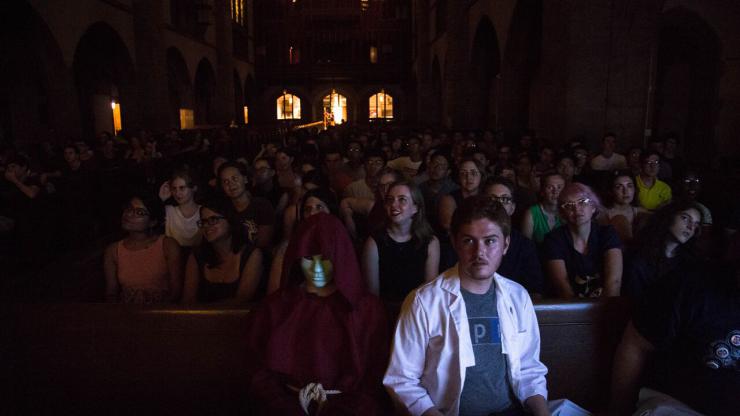
From May until early September 2017, students discovered a series of online narrative fragments, characters, and transmedia puzzles that revealed more about the secret society. From 17–23 September, students were invited to take part in nine site-specific challenges to find 121 objects that were hidden around Hyde Park, including an AOL floppy disk, a can of mushroom soup, a redlining map of Chicago, a Gwendolyn Brooks tape cassette, and a copy of Michel Serres’s book The Parasite. The experience culminated with an event at the Museum of Science and Industry during which players found “the parasite” and at which PS passed the secret society to them for future development.
This conversation between the two co-directors of the project (a faculty member in English and Cinema and Media Studies and a faculty member in Theater and Performance Studies) introduces the parasite ARG.
Patrick Jagoda: Alternate Reality Games (ARGs) are a multiplayer and transmedia form that combines elements of numerous artistic forms. Usually, they tell a single narrative that unfolds across multiple media, including online chat rooms, emails, websites, social media, videos, augmented reality, live performance, and more. Additionally, ARGs take on what is called a “This Is Not A Game” aesthetic. Designers of these games do not announce these experiences as games, thereby blurring the space between fiction and reality. Instead, players find their way into these experiences via “rabbit holes” that might include an email from a character or a mysterious website that leads into a more elaborate alternate world.
For me, ARGs come closer to what Richard Wagner called a Gesamtkunstwerk or “total work of art” than any other form I’ve encountered in my practice. Early examples of these games, such as The Beast (2001) and I Love Bees (2004) took place largely online, though they did have some live components. I Love Bees, for instance, famously had players go to pay phones across the US to receive narrative information. Even so, substantial live performance components are still rare in ARGs. Over the past few years, in collaborations with faculty and students, I’ve tried to introduce substantive performance components, through games from The Project (2012) to S.E.E.D. (2014). But the work we did together on the parasite (2017) included a broader range of site-specific work than I’ve ever done before. What do you think was the role of performance across our ARG? How did it compare to other forms of site-specific performance you’ve engaged with in the past?
Heidi Coleman: When I think about the site-specific performance in the ARG this past summer, I understand why it is rarely done to such an extent. In a week, we staged nine unique ninety-minute multi-media performances, as well as two fully realized installations: the black box theatre and the rotunda of the Museum of Science and Industry. Who does that?! And why would they. Setting our tendency to push the limits as far as possible aside for the moment, I do think it was necessary. Over the summer, through online chats, phone, email, and video links, there was live interaction between “seekers” (players) and characters. There were scripts, there was improv, and the narrative responsively developed. During six weeks, we had connected about 600 seekers through an online community. Through many specific sites. I think of this as our “Act One.”
If our work was going to extend beyond a one-act play, the moment that the students/players/seekers set foot on campus, the site needed to shift, and because we had been working on diverse media platforms, become multiple. The audience shifted and we shifted with them. The first live moment, the “call to action” that used the entirety of the Logan Center, in my mind a homage to Sleep No More, used spectacle to reinforce the “this is not a game” aesthetic and created the first opportunity for seekers to meet the characters they had already come to know. In ninety minutes, the shift from pageantry to intimate dialogue to action through the facility to the final revelation of the “super computer” space with eleven book totems to receive the objects, designed by David Carlson, which exceeded any imaginative capacity, these were waves of immersion that built on the summer’s momentum. We asked the players to co-create an imagined world, and then we invited them to embody it. Act Three at the Museum of Science and Industry, we shifted the world yet again, and handed it to them to continue.
I feel a frustration frequently in watching plays as a “civilian” that I don’t feel in the rehearsal room, and I don’t think I’m alone. As a part of an ensemble, and I am most struck by the SITI Company’s inclusion of designers as a part of development process, when we are “in the room” together there is an agency in the world being built, and electric charge.
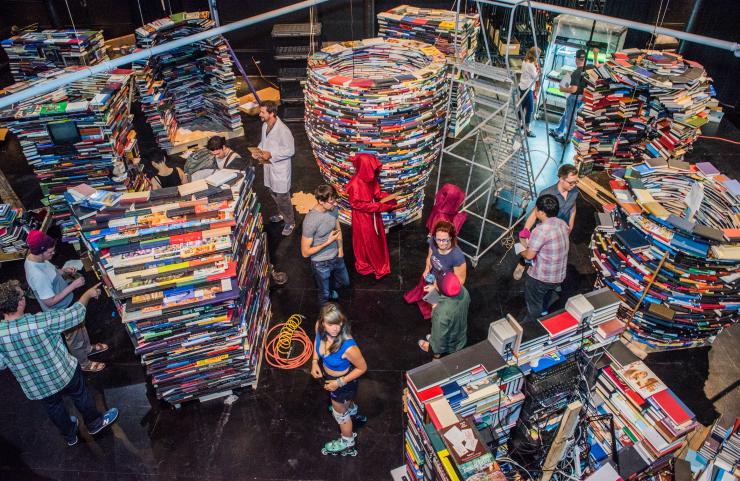
'Games are arguably the most dominant … cultural form of our time. An estimate puts the number of gamers in the world over two billion. … Games are everywhere.'—Patrick Jagoda
But here’s a question for you because it always (parasitically) bugs me, what do you mean when you say “This Is Not A Game” aesthetic. Can you unpack that more in terms of our ARG, and maybe connect that to the idea of world building?
Patrick: Games are arguably the most dominant (or at least most quickly growing) cultural form of our time. An estimate puts the number of gamers in the world over two billion. People play not only card and board games, but also PC and console videogames, mobile games, locative games, and more. On top of that, the metaphor of games seeps into elements of life that exceed entertainment. Economic game theory really expanded this trend in the mid-twentieth century insofar as it describes everything in game terms, but this tendency has since had a broader cultural impact. The language of games is often the default when we discuss finance and the stock market. Or think about how many Game of Thrones parodies of the presidential election you saw on social media in 2016. Additionally, we see the application of game design to areas outside of gameplay. Think about all of the “gamified” apps, like MyFitnessPal or Fitbit, which use points, badges, leaderboards, and other elements of games in order to nudge your behavior in particular directions. I could go on. Games are everywhere.
If anything can be a game in 2018, the “This Is Not A Game” aesthetic is an attempt to call people’s attention to the metaphor so many of us live by, especially in the United States. Alternate Reality Game designers started to experiment with this approach in the early twenty-first century. For me, it’s not about fooling people in order to make them think that they’re not playing a game. This isn’t David Fincher’s The Game (though that film was an inspiration for many ARG designers). It certainly is important to obscure the exact origin of the game (and our team of graduate and undergraduate students did an exemplary job of maintaining that secrecy for months during the online “netprov” component of the ARG). The bigger idea of this kind of world building, as you put it, is to invite participants to negotiate among themselves the status of the very experience in which they’re taking part.
My commitment to some version of this aesthetic has to do with a frustration I feel regarding the forms of “choice” and “agency” that conventional digital games promise. Oftentimes, at the level of storytelling, this comes down to branching dialogue decision trees (e.g., Mass Effect or Telltale Games works like The Walking Dead) or large sandbox worlds (e.g., games in the Grand Theft Auto or Legend of Zelda series). Many of these games are both innovative and well designed. But the claims to agency, in particular, rarely include the players as collaborators in the world that the designers have initiated. I’ve always been interested in creating worlds in which players learn gradually to become designers, and begin to examine the medium, genre, and form critically. Even more than that, ARGs excite me because they have the potential to help players experience their realities as inherently constructed—as I would argue our realities are through social norms, laws, dominant narratives, political contests, education, and media environments. To be clear, I’m not saying we live in a fiction. I’m saying that we make the world that we live in, together. The enabling thing about experiencing your reality as constructed is that you then feel capable of changing it. That’s a core design principle that we discussed along the way with our third faculty collaborator, sociologist Kristen Schilt.
But now I have a question for you. Most ARGs take place outside of institutions. They’re often viral marketing advertisements for other entertainment products. There are exceptions, of course. USC's collaborative pervasive game Reality Ends Here took place at a university with somewhere between 150 and 200 players. My Game Changer Chicago Design Lab ran an ARG called The Source for 140 high school students a few years ago. But these examples are not the norm. For you, what was the significance of running an ARG in the context of first-year orientation at the University of Chicago?
Heidi: “Creating worlds in which players learn gradually to become designers” is exactly why creating an ARG for first-year orientation seemed so significant. We started development pre-2016 election, and the evolving year, for me, made it an imperative. Orientations in general, and to college specifically, seem so rich in potential, and yet we have been approaching them as broadcasts. Information and lived-experience are disconnected. At the same time, we know that there’s a decline in resilience in college students, and from the work that we did with college advisors, that learning how to ask for help is a specific need at the UofC. Additionally, the shift from high school to college is a plastic moment for relational identities but students don’t always know how to navigate difference or tolerate uncertainty.
The ARG was a lived experience where students could choose to practice these skills. No puzzle was solved alone, and that the learning was embedded was pivotal. The ARG became a structure to create an exercise in world building, and while the narrative was/wasn’t “real” the tools for becoming a part of the UofC community and taking responsibility in building it.
‘Creating worlds in which players learn gradually to become designers’ is exactly why creating an ARG for first-year orientation seemed so significant. … [T]he shift from high school to college is a plastic moment for relational identities but students don’t always know how to navigate difference or tolerate uncertainty.'—Heidi Coleman
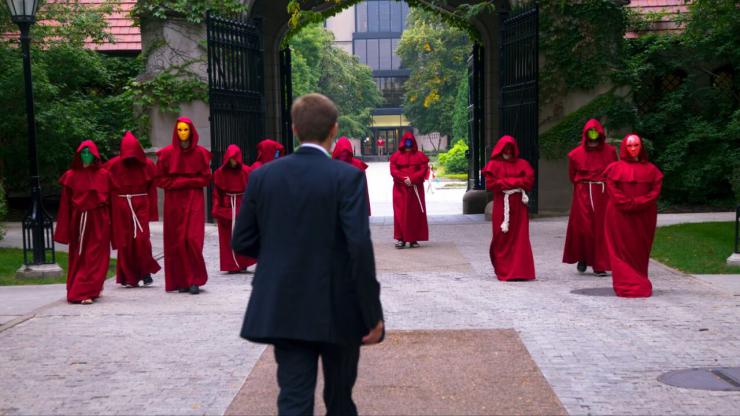
Patrick: It’s true that asking for help is immensely difficult at a place like the University of Chicago! Students are coming in with incredible accomplishments. So many of them were high school valedictorians with perfect SAT scores who excel in numerous scientific, humanistic, and artistic areas. As an incoming student, it’s intimidating to be in a place where everyone excels in so many ways, and to feel that it’s acceptable to ask for help.
The need to respond to this kind of challenge led to an ARG design that stood out for me in comparison to examples of these games that I’ve seen in the past. In addition to social media and networked digital components, we doubled down on a real-time performance component. It was important to be live and responsive to student needs, as the game unfolded. One example of this had to do with a character you created early in the game, Heidi. You constructed a Facebook account for “Penny Smahls.” Early on, Penny was largely a tool for integrating ourselves into first-year student networks. But as the game unfolded, one of our graduate student designers, Omie Hsu (a PhD student in political science), actually began to embody that character. At first, Penny would participate in the student GroupMe online chats. She took on a kind, pedagogical voice, and would answer questions about academics, social life, even ethical dilemmas. Then, when the students came to campus, Omie began to interact with the students face to face, and became a mentor figure for several of them. Some of those students said they felt comfortable asking her for help, even if their relationship had started in a semi-fictional game space. Characters played by Bill Hutchison, India Weston, Zoe Smith, and others played comparable mentorship roles. And then other designers played the part of secret society mentors and exchanged personalized emails with some of the incoming students.
Along with asking for help, our performers began to convey other learning objectives on which we decided early on, including body awareness, time management, identifying campus resources, conflict resolution, and learning through failure. We also tried to integrate as many of these learning objectives as possible into particular gameplay modules.
Heidi: The scope of the project was so vast, and the opportunity to create so many modules for performance, to test different sites, audience sizes, mediums. Looking at the trailer and the number of names is stunning, especially as many times a university office, the housing office, for example, has so many staff in and of itself. This project was a chance to bring first-year students into the university while inviting them to be an active part of creating that world. It was also an opportunity for us to invite administrators, staff members, and faculty to collaborate with student designers and professional artists. How did we pull this off? By continually asking for help, by looking at collaboration as a place to practice dissensus. I know that this was frequently frustrating for students working as designers, as we couldn’t lay out all expectations in advance; there was no model, and the script itself was responsive to the players. Half way through I remember texting you, that I wanted to do this again, because in creating the pilot, we have established collaborative relationships, sometimes literally creating a language, built the plane so to speak, and I would like to focus solely on the project itself next time. This is not an unusual challenge for a new theatre company, sometimes literally building the space while rehearsing. What is fascinating to me is how to create a responsive structure for production of ARG’s that can support the fluidity, while making sure the shows can be fully and safely realized.


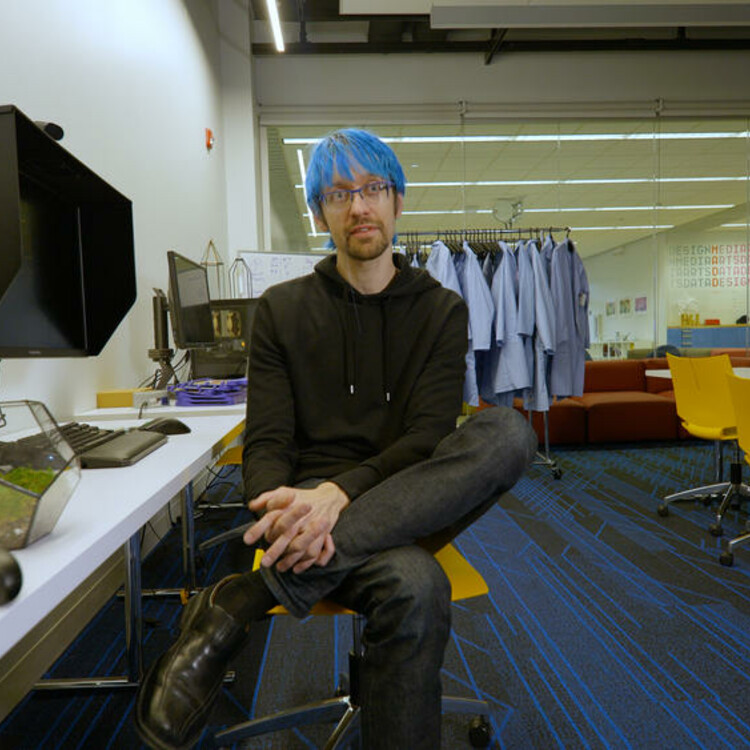
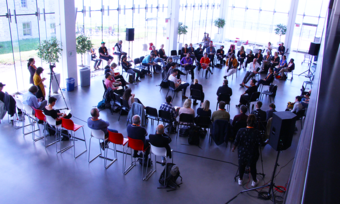

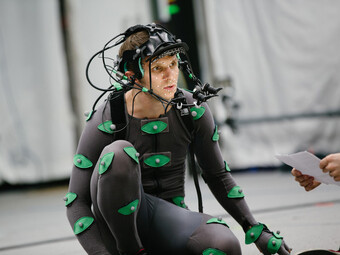

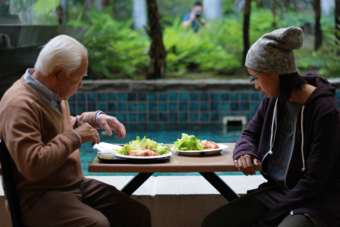


Comments
The article is just the start of the conversation—we want to know what you think about this subject, too! HowlRound is a space for knowledge-sharing, and we welcome spirited, thoughtful, and on-topic dialogue. Find our full comments policy here
As a lifelong theatre maker who is now studying higher education student affairs, I cannot tell you just how much this project speaks to me! Wonderful!